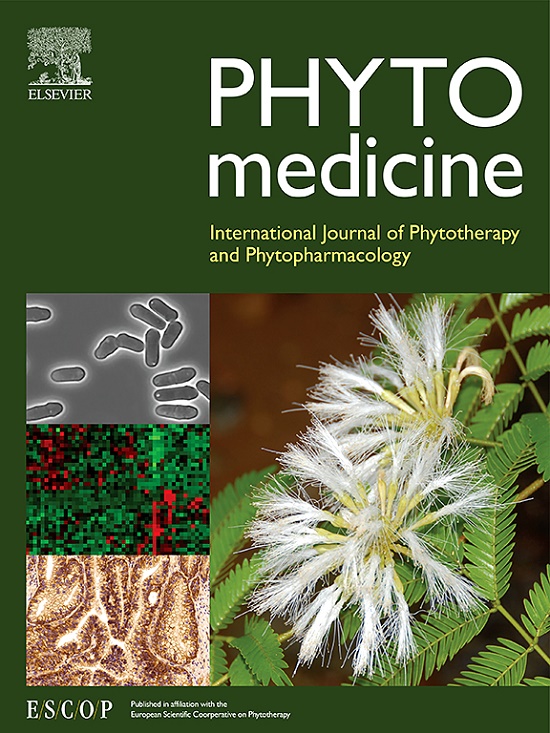JiGuCao capsule formula alleviates metabolic fatty liver disease by regulating the gut–liver axis and lipid metabolism
IF 6.7
1区 医学
Q1 CHEMISTRY, MEDICINAL
引用次数: 0
Abstract
Background
Metabolic-associated fatty liver disease (MAFLD) is a prevalent chronic liver condition globally, characterized by suboptimal treatment outcomes. Traditional therapies often fail to address the multifaceted pathogenesis of MAFLD, which involves lipid metabolism, inflammation, and gut–liver axis dysregulation. JiGuCao Capsule formula (JCF), a patented Chinese medicine, has demonstrated clinical efficacy in liver disease treatment, indicating its potential as a new therapeutic option for MAFLD.
Purpose
This study aimed to investigate the therapeutic effects and underlying mechanisms of JCF in treating MAFLD, particularly focusing on its impact on liver pathology, intestinal health, and gut microbiota composition.
Methods
A MAFLD mouse model was developed by administering a high-fat diet and 5% fructose water for 16 weeks. At week 8, mice exhibited significant steatosis, inflammation, and insulin resistance. Fifty mice were allocated into two groups: the normal diet (ND) group with 19 mice and the high-fat feed diet (HFD) group with 31 mice. Seven mice from each group were sacrificed at week 8 for serological and histopathological assessments. The remaining mice were allocated into ND (n = 6), HFD (n = 6), HFD + JCFL (human equivalent dose,780 mg/kg, n = 6), HFD + JCFH (threefold the human equivalent dose, 2340 mg/kg, n = 6), HFD + Polyene Phosphatidylcholine (PPC) (human equivalent dose,177.84 mg/kg, n = 6) and ND+ JCF (human equivalent dose,780 mg/kg, n = 6) groups. Daily gavage started at week 9. At week 16, after fasting, body weight and liver condition were recorded, and mice were euthanized with pentobarbital sodium. Mouse tissues and feces were collected for histopathological, molecular biological, and multi-omics analyses.
Results
JCF effectively slowed MAFLD progression in mice by decreasing hepatic lipid accumulation and inflammation. Treatment with JCF significantly reduced hepatic triglycerides and inflammatory markers, including TNF-α and IL-6. JCF enhanced lipid metabolism, repaired the intestinal barrier, and lowered inflammatory cytokines in the intestines, as indicated by reduced serum LPS and restored tight junction proteins expression, such as claudin-1 and occludin. Fecal microbiota analysis indicated that JCF treatment elevated Lactobacillus levels and reduced Colidextribacter levels, correlating with enhanced metabolic profiles. The primary bioactive compounds identified in JCF responsible for these therapeutic effects were betulinic acid, cholic acid, deoxycholic acid, oleanolic acid, and pectolinarigenin. Transcriptomic analysis showed that JCF regulated key pathways involved in lipid metabolism, including the pparγ–cd36 axis and modulation of ox-LDL levels. The results indicate that JCF effectively mitigates MAFLD by influencing the gut-liver axis and lipid metabolism.
Conclusion
JCF alleviates MAFLD by modulating the gut–liver axis and lipid metabolism. Its effects involve improving gut barrier function, regulating microbiota, and targeting the pparγ–cd36 axis. Active compounds like betulinic acid support its therapeutic potential. JCF shows promise as a novel treatment for MAFLD, with further clinical studies needed.

吉谷草胶囊配方通过调节肠肝轴和脂质代谢缓解代谢性脂肪肝
本文章由计算机程序翻译,如有差异,请以英文原文为准。
求助全文
约1分钟内获得全文
求助全文
来源期刊

Phytomedicine
医学-药学
CiteScore
10.30
自引率
5.10%
发文量
670
审稿时长
91 days
期刊介绍:
Phytomedicine is a therapy-oriented journal that publishes innovative studies on the efficacy, safety, quality, and mechanisms of action of specified plant extracts, phytopharmaceuticals, and their isolated constituents. This includes clinical, pharmacological, pharmacokinetic, and toxicological studies of herbal medicinal products, preparations, and purified compounds with defined and consistent quality, ensuring reproducible pharmacological activity. Founded in 1994, Phytomedicine aims to focus and stimulate research in this field and establish internationally accepted scientific standards for pharmacological studies, proof of clinical efficacy, and safety of phytomedicines.
 求助内容:
求助内容: 应助结果提醒方式:
应助结果提醒方式:


